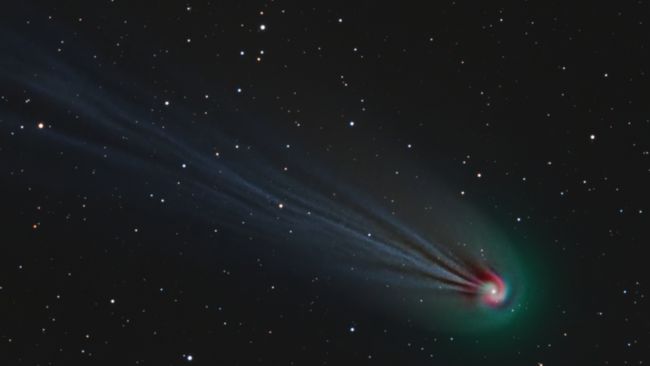Soon in all telescopes: comet 12P/Pons-Brooks is approaching Earth
The Devil's Comet that will fly past Earth later this year appears to have a spiral of light surrounding its icy heart, new images reveal. Comet 12P/Pons-Brooks (12P), 17 kilometers wide, orbits the Sun in an elliptical orbit and is currently approaching it.
Like most other comets, 12P has a core of ice, gas and dust surrounded by a frozen shell. However, unlike most other comets, 12P is cryovolcanic, meaning it erupts when solar radiation causes large cracks to appear in its core, causing the high-pressure ejection of its icy interior — cryomagma. When this happens, the comet's coma expands significantly, making the object temporarily much brighter than normal.
12P grabbed headlines last July when astronomers observed its maximum brightness for the first time in 69 years. Since then it has continued to erupt regularly. During the first eruptions, its coma had an irregular shape, caused by a depression in the core that blocked the outflow of cryomagma. This made the comet appear as if it had sprouted demonic horns, giving the icy object its ominous nickname. However, during later eruptions these horns appear to have disappeared.
As 12P moved closer to the Sun, its coma, green in color due to its high carbon content, became significantly more visible. It has also formed a large tail of dust and ice, which is blown away by the solar wind.
On March 9, astrophotographer Jan Erik Wallestad captured highly detailed images of 12P and its long tail. Using software, he was able to highlight the previously invisible spiral within the coma. Such a spiral is also visible in the images of Latvian astrophotographer Juris Sennikov, who copied the image processing technique used by Vallestad.
The spiral shape is likely caused by small geysers on the 12P surface that emit streams of cryomagma. As the comet rotates, the icy jets form the spiral visible in the new photos.
Last month, blurry images of the comet also showed a «yin-yang» in coma. It can be assumed that this was the first evidence of the existence of a spiral. However, the connection was not established then.
Currently, 12P is speeding through the inner Solar System at about 64,500 km/h. The comet will reach its closest point to the Sun on April 24. After that, it will pass by our star and fly past Earth on its way to the outer reaches of the solar system. Its closest approach to Earth will be on June 2, around which time the comet will be visible to the naked eye in the night sky.
Astrophotographers hope to see the comet during the total solar eclipse on April 8, but it will likely take another large cryomagma eruption for 12P to become visible during the eclipse.

